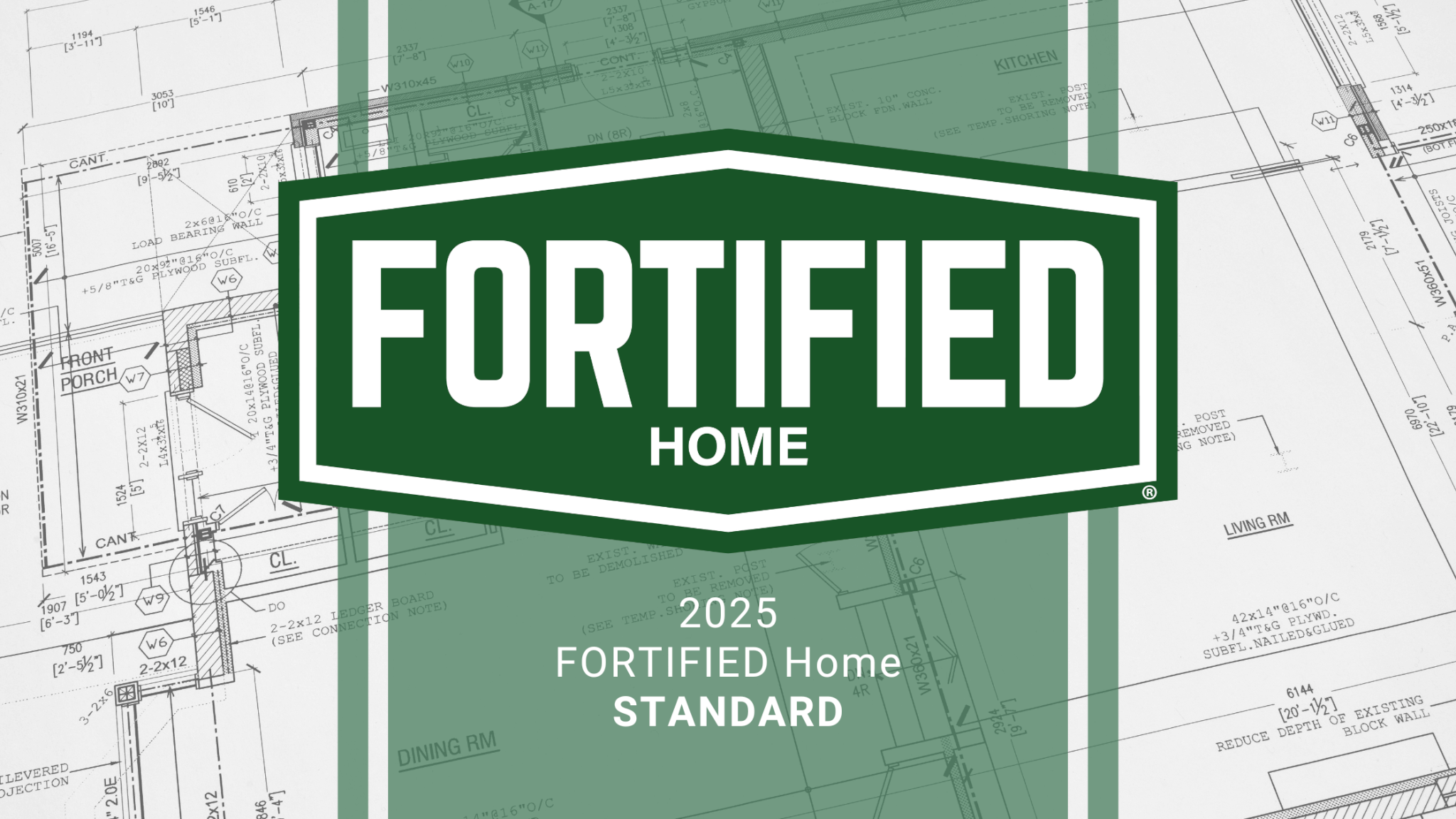The Insurance Institute for Business & Home Safety (IBHS) has announced updates to its 2025 FORTIFIED Home Standards, which aim to enhance resilience against increasingly severe storms. These revisions build on the program’s proven success in reducing property damage, improving safety, and saving costs in high-risk areas. Strengthening requirements for roof performance, opening protection, and building maintenance aims to address vulnerabilities exposed during recent hurricanes and extreme weather events.
Key updates
One key update is the increased focus on preventing water intrusion, a leading cause of costly repairs. Builders must implement better-sealed roof systems and elevated thresholds to minimize water damage during heavy rainfall and high winds. Another significant change is the revised standards for impact resistance. Windows, doors, and other openings will require tougher materials and installation techniques to withstand flying debris. Additionally, there are new requirements for periodic roof inspections, which will help maintain the integrity of these systems over time.
These changes emphasize accessibility for builders and homeowners. The 2025 updates include simplified guidance, making compliance more achievable for contractors of all experience levels. IBHS has also partnered with local governments and industry professionals to provide training and certification programs, ensuring the workforce is prepared to meet these updated standards.
Impact on the industry
The construction industry stands to benefit significantly from these improvements. Fewer claims for storm-related damage mean lower insurance costs for property owners and reduced liability for builders. For municipalities, more resilient buildings translate to less strain on disaster response systems and infrastructure. The updates also help builders stand out in competitive markets, where consumers increasingly prioritize durable, storm-resistant properties.
By incorporating these new standards, architects, engineers, and contractors can reduce risks and build long-lasting relationships with clients who value quality and safety. These improvements highlight the importance of proactive construction practices in mitigating damage and ensuring long-term performance.
If you work in construction or design, it’s time to get familiar with these changes. Adopting the 2025 FORTIFIED standards will help future-proof your projects and position your business as a leader in storm-resilient building practices.
Stay on top of construction innovations like this—subscribe to the Under the Hard Hat newsletter at underthehardhat.org/join-us and never miss an update on industry advancements.



